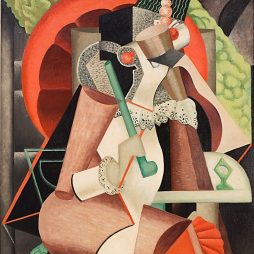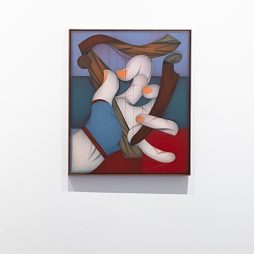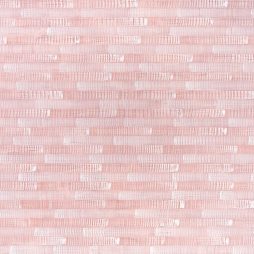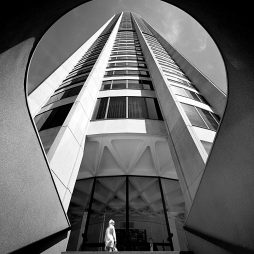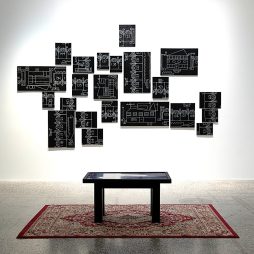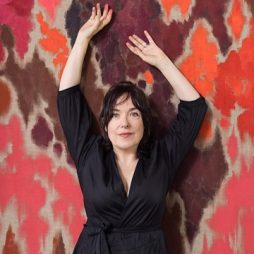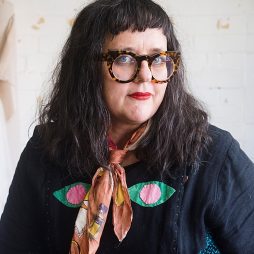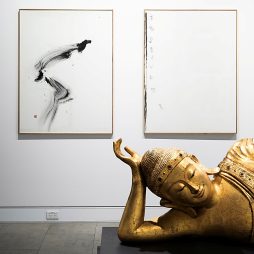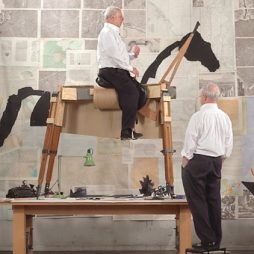Kevin Chin
Kevin Chin's second show at Martin Browne Contemporary might be thought of as a "political" show – but the paintings also defy the proclamations, imperatives, and the flatness of the political. They open instead onto some more spacious kind of feeling.
The success of Kevin Chin’s sellout first show with Martin Browne Contemporary, in 2019, was widely attributed to his of-the-moment impulse for political painting. His work, which has long examined the entanglement of place, power, and personhood, clearly did respond to the cues of the minute: to climate change, to diaspora and the treatment of asylum seekers in Australia, to globalisation, and globalised wealth inequality. That he was on residency in the US in 2016, at Yellowstone National Park, when Donald Trump was elected President is a narrative often retold in press – for good reason, of course – and solidifies this vision of Chin as an outrightly “political” painter. Scanning through the titles of Chin’s eight new large-scale paintings, for his second Martin Browne show, we can see continued this same instinct toward the retweetable: Between a Rock, Rescue, Deep Roots and Tunnel Vision (all 2021).
However, looking past the titles and into the spaces opened up within the paintings themselves, we don’t really see sloganeering, instruction, or a “call to action.” Something much slower, more ambivalent, and deeply-felt is occurring. Perhaps its is a call to feeling. Perhaps it is even subtler than this: not a call at all, but a door – or, softer still, a window – left open.
There are figurative clues as to what these paintings are “about” strewn through the canvases: there are little-boxes-on-the-hillside flat pack homes stretching into the suburban beyond, there are clothes drying outside shanties, there are rural farmhouses, and parklands, and “wilder” scenes of nature. So many of the places in Chin’s work are pictured on the verge of becoming non-places: repetitious, non-specific, characterised only by their partaking of a global network of capital that leaves a legacy of homogenisation in its wake wherever it reaches. The paintings also feel, to me, to be “about” what happens in the space between these things of the world, and the kind of feeling and thinking about this space that painting itself opens up. Space in these pictures, like place, also unfurls into something self-confounding.
In Tunnel Vision, for example, the ground becomes the sky becomes the ground; sandy hills become mountains, become forest, becomes something that looks like the long underground pedestrian passageway in Sydney’s Central Station. In the midst of this all is an endless recession of sky. In Away House, 2021, the flat facades of a row of houses are swept away into fields of colour – pink and blue – which bleed into becoming varied skies, as well. This expanse – and maybe it is something even more difficult to grasp than the sky, after all – is a field uniquely accessible through painting and the kinds of perspective and representational play that it accomplishes. It is, in Chin’s new work, a space where accumulation and loss, distance and attachment, can be uniquely felt. It’s tempting to say that this makes the paintings “about” the pandemic, and lockdowns, and having the sense of being away from or losing what is dear to us. But I don’t think this is quite the whole story. The paintings feel more human than they do viral.
Politics is a felt activity. I wonder, looking at these paintings, whether the reverse really holds as well: is all feeling political? Felling, here, is indeed what happens between people, places, and even disembodied social or economic forces – but it is not “of the moment.” Like the pink-to-blue gradations of Chin’s skies, it’s more various, and spacious, than that.










